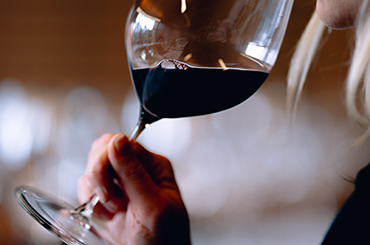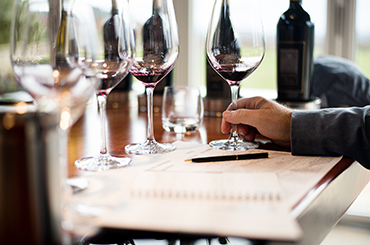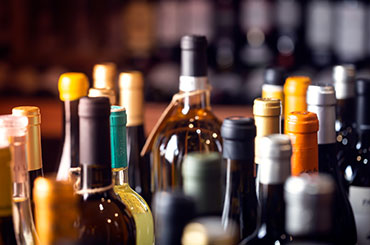Winemaking techniques, climate and viticulture all determine the taste of a wine – but what comes after opening the bottle can have a big impact, too. When serving your favourite drop it’s important to understand a few basic principles to ensure you do the style justice. Should you decant your wine prior to serving? How chilled should the bottle be? What shape wine glass will allow for maximum enjoyment? Read on for some tips to ensure you’re serving a wine just how the producer intended – and to make sure you get the most out of your bottle.
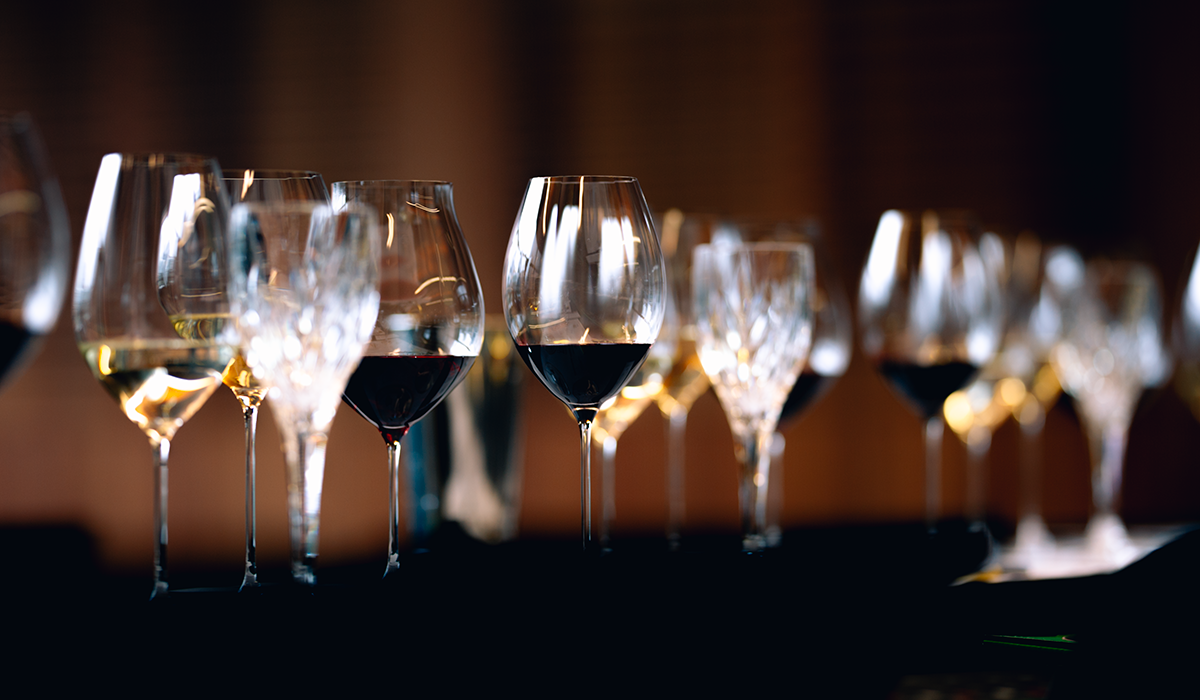
Opening the bottle
In Australia – with the exception of sparkling styles – screw-cap closures are most common. However, if you’re partial to European producers, cork closures are commonplace, and a good corkscrew technique will help you avoid any potential disasters. Ensuring the curl of the corkscrew (rather than the sharp tip) is centred to the cork when you pierce it will help prevent any tearing, and make sure it’s almost all the way inserted before pulling. To safely open a bottle of champagne or sparkling wine, rotate the base of the bottle while firmly holding the cork – not the other way around.
Decanting
Decanting a red wine prior to drinking will help it develop and can enhance the taste of white wine and rosé, too. The ideal decanter or decanting time depends on the wine itself. Younger or fuller-bodied reds can benefit from a couple of hours, whereas lighter or older styles may only need up to 30 minutes. With younger red wines, a decanter with a wide base provides a large surface area for the wine to come into contact with oxygen or a design that allows you to shake the wine vigorously for maximum aeration, but opt for one with a more slender mouth for older wines that may have accumulated some sediment. White wine and rosé will also benefit from decanting – but for no more than 30 minutes. A compact decanter that fits in the fridge is a great option to keep the wine chilled at the same time.
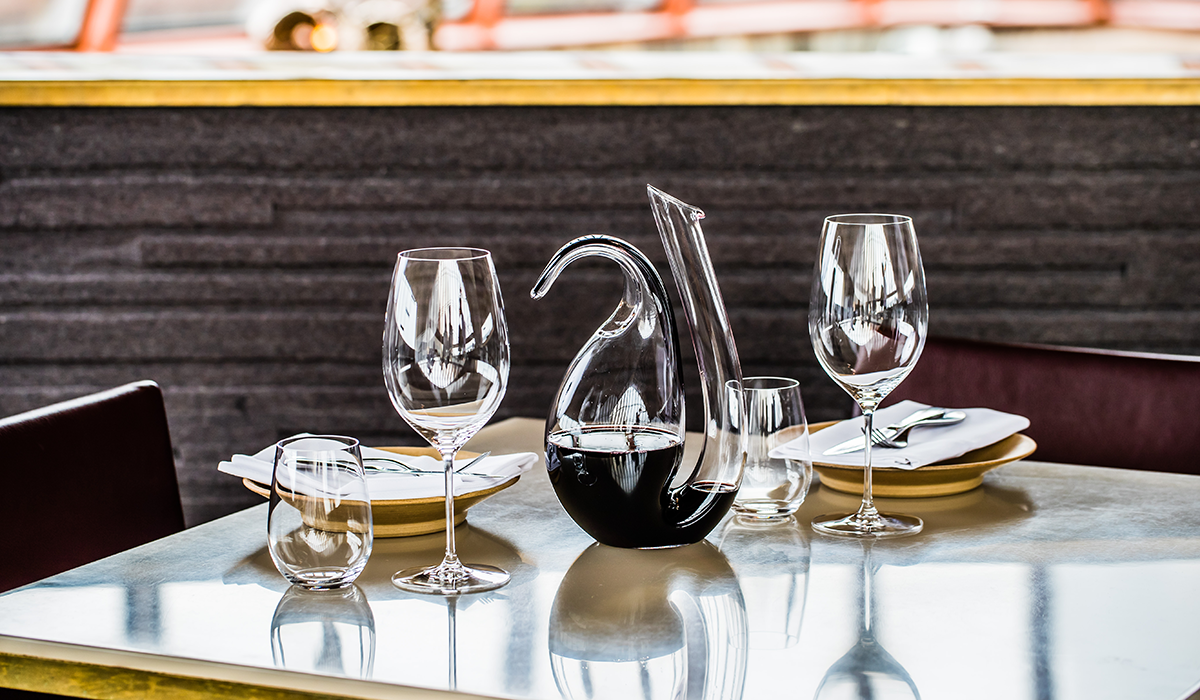
Temperature
Serving your wine at the correct temperature is essential in ensuring you can experience more of the delicate flavours and aromas. Typically, all wines will taste better slightly chilled. Red wines are best served between 12–18 degrees celsius – the lighter the style, the colder it should be served. White wines should be served between 8–12 degrees celsius, again with lighter whites benefitting from a colder temperature. Sparkling wines and Champagne should be served coldest at about 5–7 degrees celsius – using an ice bucket to chill your bottle once open will ensure it stays at optimum temperature.
Glassware
Glassware consists of three parts: the bowl, the stem and the base. While the height of the stem and the width of the base are simply part of the glass’s architecture, the bowl is the critical part of the design and can significantly affect how a wine is enjoyed.
Varietal-specific glassware is key in ensuring you get the most out of a glass of wine, for example:
When in doubt, Mark Baulderstone, managing director of RIEDEL Australia and New Zealand, suggests selecting your core glassware styles based on the wines you drink the most.
“I’d recommend starting with your favourite varieties, whether that’s all white wines, all red wines, or one white and one red,” says Mark. “Our attitude is that you shouldn’t compromise on the things you love. Every ‘universal’ wine glass asks you to sacrifice experience for simplicity. I always joke that RIEDEL complicates your wine life by showing you what a difference the right glass can make, but the reward is always worth it.”
This article was brought to you in partnership with RIEDEL.
Top image credit: Wine Australia

Opening the bottle
In Australia – with the exception of sparkling styles – screw-cap closures are most common. However, if you’re partial to European producers, cork closures are commonplace, and a good corkscrew technique will help you avoid any potential disasters. Ensuring the curl of the corkscrew (rather than the sharp tip) is centred to the cork when you pierce it will help prevent any tearing, and make sure it’s almost all the way inserted before pulling. To safely open a bottle of champagne or sparkling wine, rotate the base of the bottle while firmly holding the cork – not the other way around.
Decanting
Decanting a red wine prior to drinking will help it develop and can enhance the taste of white wine and rosé, too. The ideal decanter or decanting time depends on the wine itself. Younger or fuller-bodied reds can benefit from a couple of hours, whereas lighter or older styles may only need up to 30 minutes. With younger red wines, a decanter with a wide base provides a large surface area for the wine to come into contact with oxygen or a design that allows you to shake the wine vigorously for maximum aeration, but opt for one with a more slender mouth for older wines that may have accumulated some sediment. White wine and rosé will also benefit from decanting – but for no more than 30 minutes. A compact decanter that fits in the fridge is a great option to keep the wine chilled at the same time.

Temperature
Serving your wine at the correct temperature is essential in ensuring you can experience more of the delicate flavours and aromas. Typically, all wines will taste better slightly chilled. Red wines are best served between 12–18 degrees celsius – the lighter the style, the colder it should be served. White wines should be served between 8–12 degrees celsius, again with lighter whites benefitting from a colder temperature. Sparkling wines and Champagne should be served coldest at about 5–7 degrees celsius – using an ice bucket to chill your bottle once open will ensure it stays at optimum temperature.
Glassware
Glassware consists of three parts: the bowl, the stem and the base. While the height of the stem and the width of the base are simply part of the glass’s architecture, the bowl is the critical part of the design and can significantly affect how a wine is enjoyed.
Varietal-specific glassware is key in ensuring you get the most out of a glass of wine, for example:
| For full-bodied, complex red wines that are high in tannin, opt for a glass with a large bowl that will allows the bouquet to develop fully, and smooths out the rough edges. A style such as the RIEDEL Performance Cabernet glass emphasises the fruit, playing down the bitter qualities of the tannin, and allows wines to achieve balance. |
 |
| For Champagne or sparkling wines, a tulip-shaped flute glass will emphasise the wine's fresh fruitiness while tempering its high acidity – perfect for light, fresh and dry styles. Try the RIEDEL Performance Champagne glass. |
 |
| An egg-shaped bowl brings forward the soft fruit, earthy characteristics, and long savoury finish of medium-bodied reds. The RIEDEL Performance Shiraz/Syrah glass is perfect for balancing the fruit pepper and spice aromas and gripping tannins often found in these styles. |
 |
| For lovers of fruit-forward whites, opt for a larger bowl to enhance aromatics – such as the RIEDEL Performance Riesling glass. This versatile glass suits a range of styles, balancing the high acidity, residual sugar and mineral components of many white wines. |
 |
When in doubt, Mark Baulderstone, managing director of RIEDEL Australia and New Zealand, suggests selecting your core glassware styles based on the wines you drink the most.
“I’d recommend starting with your favourite varieties, whether that’s all white wines, all red wines, or one white and one red,” says Mark. “Our attitude is that you shouldn’t compromise on the things you love. Every ‘universal’ wine glass asks you to sacrifice experience for simplicity. I always joke that RIEDEL complicates your wine life by showing you what a difference the right glass can make, but the reward is always worth it.”
For more on grape varietal specific glassware, shop the RIEDEL wine glass guide.
This article was brought to you in partnership with RIEDEL.
Top image credit: Wine Australia





